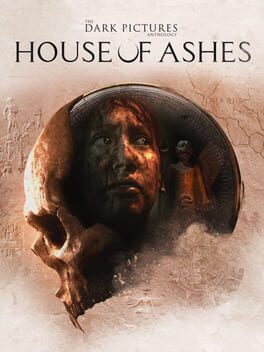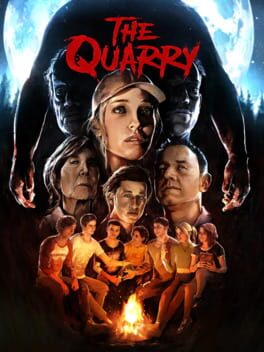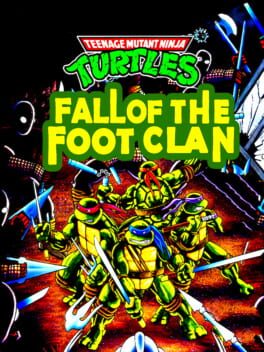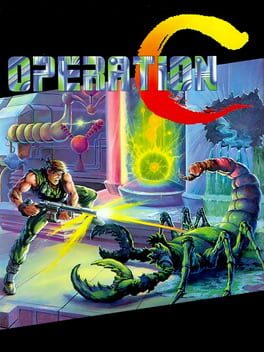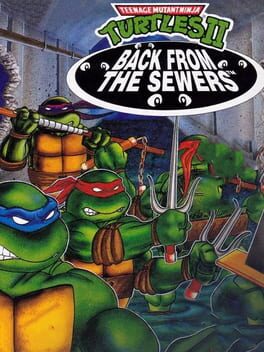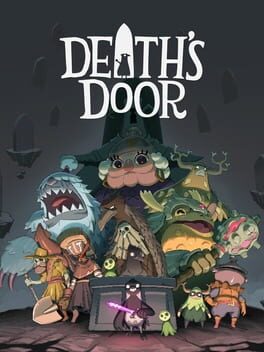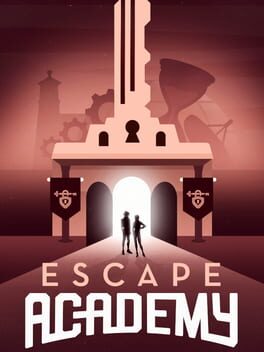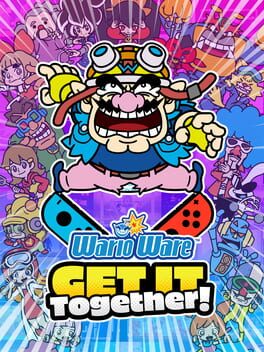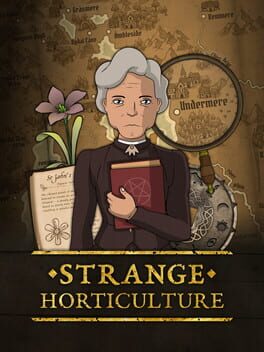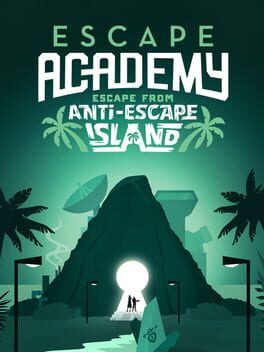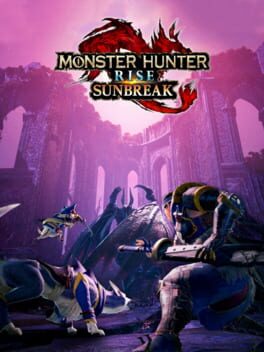Jason0278
I enjoyed the story of 'House of Ashes' possibly more than I did that of either previous 'Dark Pictures' game. It creatively mixes genres so it is a military story, a vampire story, and a specific kind of science fiction story that I won't spoil here. That is the strength of 'HoA.' Its weakness is the same as 'Little Hope's.' Nothing here necessitates the separate screens co-operative experience. What was so exciting about 'Man of Medan' was that the two players took wildly different paths through the story, intersecting at key moments. At times, because of the mind trippy nature of the threat, the two players might be together in a shared game space, but see the events play out differently. Swapping roles for a second playthrough was an entirely new experience. Here in 'House of Ashes,' the two players are together for nearly the entire length of the game. Walking around together, finding the same clues, reading the same documents, reacting to the same threats. It's fun to chat with a friend while you play, but I hope the future games in this series make the co-op experience essential again.
2022
A marginally interactive experience (not a knock), 'The Quarry' succeeds if it's got good characters. And I'm happy to report 'The Quarry' has good characters. I really enjoyed my time spent with many of them. And they are made more interesting by the fact that you're in control of their behavior and can make them defy their stereotypes in really interesting ways. For example, I love that my Jacob (a really funny Zach Tinker), the stereotypical meathead jock, was actually a whiny, silly goofball in my story. Even if the story that unfolds among our characters isn't exactly riveting, the folklore that explains the threat is interesting, and is made moreso by the optional clues you can find and read, and by the tarot-inspired framing device. I haven't missed a single Supermassive game yet, because their formula is always compelling enough to want more. 'The Quarry' is as successful as 'Until Dawn' and more successful, in my opinion, than several of the more recent 'Dark Pictures' games.
2022
If you're buying 'Splatoon 3' for the multiplayer, know that you're getting more of the same. Turf War, ranked battles, and Salmon Run are unchanged with the exception of a few new maps, weapons, subweapons, and specials. The modes are all the same and yes, they are as fun here in '3' as ever before. But the differences to multiplayer really only warranted a DLC expansion of 'Splatoon 2,' not a new boxed game. The new content is in the solo experience. I found the new campaign more satisfying than any in the previous games or expansions. Brilliant change to make all the collectibles in the overworld, not the individual levels. I loved that I didn't have to replay levels because of a missed collectible. And there seemed to be many more levels than there were in '2.' I wish there had also been more bosses, because the boss battles are fun. But with so many levels, and so few bosses, they don't quite have the impact here that they did in '2.' The new in-universe collectible card game, Tableturf Battle, is a fun new addition. And the new idols, Shiver, Frye, and Big Man, are cool. 'Splatoon 3' is good, but whereas this all once felt edgy and fresh, now it's kinda just the same old thing.
2022
'Madison' frustrated more than it frightened. Some of the puzzles are very obtuse so you're left wondering, at times, what the game is even asking of you. Layer on top of that the game's many glitches that prevent your progression but let you continue playing. This is a terrible combination. Sometimes, I would solve the puzzle correctly and nothing would happen in response. So, I would wander the entire house trying to figure out what I was missing. Then, so convinced I did everything correct, I'd consult the internet and learn, yes, I was correct, and yes, the game was glitched. Luckily, a hard reset was all that was ever required to get the game moving again. But damn you can't have puzzles this obtuse AND progression-blocking glitches.
I didn't think 'PT' was a very good game, so I'm not all that thrilled with this trend in 'PT' knockoffs. But there are indeed some very effective jump scares in 'Madison.' Close to the end, they are so frequent and so jarring that I swear I worried for the health of my heart.
I didn't think 'PT' was a very good game, so I'm not all that thrilled with this trend in 'PT' knockoffs. But there are indeed some very effective jump scares in 'Madison.' Close to the end, they are so frequent and so jarring that I swear I worried for the health of my heart.
'Fall of the Foot Clan' is from a time when games could earn praise for having 'responsive controls.' So that gives you an idea of the standards to which this game should be held. In 1990, we were impressed when a game simply responded properly to our input. And 'Fall of the Foot Clan' does just that. It controls well and the hit boxes make sense. You just walk to the right and slash away foot soldiers at the rate of one kill per weapon swing. The only resistance you'll encounter is with the five bosses. But even still, you'll instantly grok their attack/movement patterns. I beat the game after only a few playthroughs and they go quick. A full game playthrough start to end credits takes around twenty minutes. It is notable that these 8-bit characters look even better, and are better animated, here than they are in the original NES game. 'Fall' is an enjoyable game from the early days of the GB. Better than much you'll find on that platform from this time.
1991
Considering the platform and the year and the hardware demands of the 'Contra' series, 'Operation C' can only be seen as a triumph. Just a bit slower, and a bit easier, than a typical 'Contra' game, 'Operation C' offers up five very good, very different run-and-gun levels. Horizontal and vertical scrolling and a difficulty curve that gently slopes upward to the conclusion. After a few playthroughs, you'll learn the enemy patterns well enough to beat the game, and a full playthrough, start to end credits, is less than twenty minutes long. But if you're exploring the early days of the 'Contra' series, 'Operation C' is not one to overlook on account of its underpowered platform. This is good 'Contra.'
Aloy is one of gaming's great heroes. Her characterization, and Ashly Burch's performance, add up to something so special that these games are almost worth playing just to spend more time with her. She's exactly who she needs to be. And her story here, in 'Forbidden West' is interesting. I love how she inspires characters, all along her journey west, and I love how they come together into one awesome team to face off against this game's interstellar new threat. The strength of this story is nearly exactly the same as that of 'Ghost of Tsushima.' So much so, in fact, that it makes you wonder how direct that inspiration may have been. 'Breath of the Wild' is another clear inspiration, considering how Aloy can suddenly climb any surface and can paraglide down from heights. But I believe 'Ghost' and 'Breath' to be much better games than 'Forbidden West.'
Where 'Forbidden West' trips over itself is in its lore and the communication of said lore. Most of the action that drives the 'Horizon' series took place a thousand years before Aloy was born. We never engage directly with it. It is completely learned through dialogue and the reading of in-game documents. And yet understanding that lore is vital to understanding what motivates Aloy. Vital to understanding what the hell she is doing in either of these games. This might not be such a big ask on the player, but the lore of 'Horizon' is so dense and relies on such much jargon, that I spent hours reading and watching Youtube videos to keep up with it. Across the fifty+ hour playtime, trust me, you will not be able to hold in your memory the nuanced differences among GAIA, HEPHAESTUS, HADES, MINERVA, DEMETER, AETHER, POSEIDON, APOLLO, ARTEMIS, and ELEUTHIA. And those are just the game's artifical intelligences. I have a far easier time making sense of the 'Matrix' movies and that's really saying something. I just don't know why this series chooses to bury the player under so much complicated lore. Too often Aloy is doing something that would only make sense if I still remembered the details of a single conversation, or a single document, experienced tens of hours earlier in the game. I wish each mission did a better job of telling its own story.
The combat action is fun. The graphics are genuinely stunning. Aloy is a peach. But there is a storytelling problem here that gets in the way of complete enjoyment.
Where 'Forbidden West' trips over itself is in its lore and the communication of said lore. Most of the action that drives the 'Horizon' series took place a thousand years before Aloy was born. We never engage directly with it. It is completely learned through dialogue and the reading of in-game documents. And yet understanding that lore is vital to understanding what motivates Aloy. Vital to understanding what the hell she is doing in either of these games. This might not be such a big ask on the player, but the lore of 'Horizon' is so dense and relies on such much jargon, that I spent hours reading and watching Youtube videos to keep up with it. Across the fifty+ hour playtime, trust me, you will not be able to hold in your memory the nuanced differences among GAIA, HEPHAESTUS, HADES, MINERVA, DEMETER, AETHER, POSEIDON, APOLLO, ARTEMIS, and ELEUTHIA. And those are just the game's artifical intelligences. I have a far easier time making sense of the 'Matrix' movies and that's really saying something. I just don't know why this series chooses to bury the player under so much complicated lore. Too often Aloy is doing something that would only make sense if I still remembered the details of a single conversation, or a single document, experienced tens of hours earlier in the game. I wish each mission did a better job of telling its own story.
The combat action is fun. The graphics are genuinely stunning. Aloy is a peach. But there is a storytelling problem here that gets in the way of complete enjoyment.
'Back to the Sewers' is a 'TMNT' game with unlimited continues, and this is so forgiving that beating it is guaranteed on first playthrough. I, however, only learned about the continues after spending a day unnecessarily training on levels and bosses. To make sure this game provided me with a challenge, I only declared the game completed once I beat it all the way through without using any continues. Now doing this is MUCH harder than it was in the original 'TMNT' Game Boy game, 'Fall of the Foot Clan.' And not in the fair way you'd hope for in a precision action game.
There are sections of this game where the pattern and pace of enemy introductions are such that there is absolutely no way to avoid taking damage. Sometimes considerable damage. The liberal offerings of pizza throughout seem to be an admission of the developers' mistakes. The boss patterns are much more difficult here than in the original game and require pixel perfect accuracy and perfect execution of the slide move. That slide move sucks, let me also say, considering it involves pushing both jump and attack buttons simultaneously and usually results in a jump or an attack rather than the desired slide.
The graphics are more detailed here than in 'Fall of the Foot Clan' but the turtles look dopier and the reach of the weapons is reduced to an absurdly short distance. The hit boxes make less sense here. The level design is messier. And as mentioned, the enemy encounters are poorly designed. A more challenging game, and I felt great beating it without using continues (and with two turtles left in the bank), but I still prefer the elegance and simplicity of 'Fall of the Foot Clan.'
There are sections of this game where the pattern and pace of enemy introductions are such that there is absolutely no way to avoid taking damage. Sometimes considerable damage. The liberal offerings of pizza throughout seem to be an admission of the developers' mistakes. The boss patterns are much more difficult here than in the original game and require pixel perfect accuracy and perfect execution of the slide move. That slide move sucks, let me also say, considering it involves pushing both jump and attack buttons simultaneously and usually results in a jump or an attack rather than the desired slide.
The graphics are more detailed here than in 'Fall of the Foot Clan' but the turtles look dopier and the reach of the weapons is reduced to an absurdly short distance. The hit boxes make less sense here. The level design is messier. And as mentioned, the enemy encounters are poorly designed. A more challenging game, and I felt great beating it without using continues (and with two turtles left in the bank), but I still prefer the elegance and simplicity of 'Fall of the Foot Clan.'
2021
'Death's Door' is decent but forgettable. It's more 'Dark Souls' than it is 'Legend of Zelda' and that was a bit of a surprise to me. I think the reason to play would be if you enjoy pattern-recognition combat and deaths that are always but a few hit points away. I most enjoyed the boss battles. Fun boss designs and stories and certainly these fights were more enjoyable than trudging through the millions of grunts to get to them. You really need to quickly plow through 'Death's Door' because the game does a terrible job of reminding you where you should be going and what you should be doing. Add together the seemingly random locations of the portal gates, the ability to walk into and out of any past level, and the lack of any goal indicators, and trust me, it is easy to lose your place. I had hoped for more, but would recommend 'Death's Door' to that specific (but growing) audience that enjoys patterned combat and dying a lot.
2021
'Resident Evil 4,' as a game, shows its age. It is overly long (at around 20 hours) and so feels padded and bloated. The characters are really cheesy and I'm not sure the writers and performers know they are. And while the setpieces are fun, most of the in-between is rather dull. That said, I had a lot of fun revisiting these spaces and these enemies in VR. This is only my second playthrough since the Gamecube original, and found it remarkable how close the designs and even the graphical quality mimic that original. It's less like 'RE4' became a real-life experience and more like I stepped foot inside that Gamecube game. Don't get me wrong. It was a mind-blowing feeling to be in those places and actively acting out those iconic moments.
The play controls are so much better here in VR than they were in the original that the game becomes exceedingly easy. I remember in that original, fumbling around with joysticks, standing static, trying to pull off headshots on moving enemies while they throw things at me. Here, I'm dodging hatchets like a ninja, throwing my gun from one hand to the other, perfectly aiming at hairlines and nailing headshot after headshot. Did I care that it was too easy? Absolutely not. I've already played this game. So this playthrough was always meant to be experiential. It's nowhere near as remarkable an experience as 'Resident Evil 7' was in VR, but that's mostly due to 'RE4' being nowhere near as good a game as 'RE7.' Yes, I said it!
Oh and 'Village' is better than both of them!
The play controls are so much better here in VR than they were in the original that the game becomes exceedingly easy. I remember in that original, fumbling around with joysticks, standing static, trying to pull off headshots on moving enemies while they throw things at me. Here, I'm dodging hatchets like a ninja, throwing my gun from one hand to the other, perfectly aiming at hairlines and nailing headshot after headshot. Did I care that it was too easy? Absolutely not. I've already played this game. So this playthrough was always meant to be experiential. It's nowhere near as remarkable an experience as 'Resident Evil 7' was in VR, but that's mostly due to 'RE4' being nowhere near as good a game as 'RE7.' Yes, I said it!
Oh and 'Village' is better than both of them!
2022
After playing, I bought the 'Season Pass' for the two expansions, so that should demonstrate my enjoyment. But it's not exactly a home run. The in-game graphics (including and especially the character art) are truly wretched, for example. But this is otherwise a fun escape room co-operative experience with a good number of escapes (13?) given the budget price. First-person escape room video games are no new thing, of course, and I’m not sure this one ranks up there with the best of them (‘The Room VR’ being the pinnacle in my estimation). But it is satisfying and fun to play through with a partner especially if you’re not looking for any particular challenge.
I don’t really understand the five-key difficulty scale used in ‘Escape Academy.’ Some of the easiest escapes were at the 4- and 5-star difficulty rank. It may just be that ‘Escape Academy’ is generally too easy for escape room devotees. If you’ve played any ‘Exit: The Game” tabletop escape rooms, it may help to hear that ‘Escape Academy’ is easier than the one-dot difficulty rank used by ‘Exit.’
I don’t really understand the five-key difficulty scale used in ‘Escape Academy.’ Some of the easiest escapes were at the 4- and 5-star difficulty rank. It may just be that ‘Escape Academy’ is generally too easy for escape room devotees. If you’ve played any ‘Exit: The Game” tabletop escape rooms, it may help to hear that ‘Escape Academy’ is easier than the one-dot difficulty rank used by ‘Exit.’
I’ve played many ‘WarioWare’ games and it’s not always obvious to me why some click and some don’t. My favorites are ‘Twisted’ and ‘Mega Microgames,' but I fell off during the age of motion controls and touch screens. ‘Get It Together’ refers to the multiplayer functionality of this newest game in the series, but I played almost entirely solo. So the real gameplay twist for me was the use of player-controlled, in-game characters who are the ones performing the tasks of the microgames. I’ve seen a lot of complaint about this mechanic but I liked the added challenge of not only quickly understanding the task but also how to apply the randomly selected character to that task. Because you have the option of playing each game round with characters you’ve selected from the unlocked pool, it is true that you quickly find your favorites and use them again and again. And based on their maneuverability and the presence of and effectiveness of their projectiles, I suspect we’re all picking the very same characters. But upon completing the story, you unlock the ability to be completely surprised by a completely random character selection for each and every microgame. And that breaks your reliance on your favored team, and adds good challenge to the game. What I’m trying to say is that this is one of the good ‘WarioWare’ games. I enjoyed all the time I spent getting every level beyond the fifty-game completion mark and I expect to continue to attempt to break my top scores throughout the remaining years of the Switch lifespan.
2022
There's a short story's worth of fun storytelling here involving cultists and rituals and awakened demons. But the gameplay is about solving very small mysteries a la 'Papers Please.' You're tending a plant shop and using limited reference materials to fulfill customer requests. You also need to expand your selection by interpreting mysterious messages that lead you around a game map to find and collect new plants. This is a vibe-out kind of game. Its greatest appeal is in its quietest moments. Listening to the thunderstorm outside, watering plants, reading your plant identification guide, writing out labels, organizing your collection. One quick note, on Nintendo Switch, the text is far too small to read. Even when displayed on a 65" television screen, so imagine how it appears on the hardware's own screen. You'll make perpetual use of the in-game magnifying glass. It's a wonder they didn't just make the text larger. Trying to read this game made me feel old and that's just not very nice.
'Anti-Escape Island' does what any good story extension should do. Introduce trippy, fantastical elements to the universe. And, of course, transport the characters to a tropical island. The price per escape room is higher here than in the base game, but the rooms don't reveal any reason for that higher price point. The difficulty ranks are higher than in the base game, but I didn't find any of 'Anti-Escape Island' to be any more challenging than the easiest rooms of the base game. Get this if 'Escape Academy' left you wanting more and you're not turned off by paying $10 for less than two hours of gameplay.
I'm convinced that 'Monster Hunter Rise' is the best 'Monster Hunter' game. And with 'Sunbreak,' the 'Rise' experience feels complete. The old joke goes that the entire 'Monster Hunter' story campaign (through Low and High Ranks) is the tutorial and G Rank (now Master Rank) is the actual game. 'Sunbreak' expects that you've mastered the base game and makes bigger demands on your hunting efforts. Even still, progress is swift. The return of classic monsters and the new additions here in 'Sunbreak' are all a joy to hunt. I'll admit that the new Follower Collab Quests didn't do much for me, but 'Sunbreak' otherwise reaffirms 'Rise' as the best 'Monster Hunter' and 'Monster Hunter' as the best(ish) video game series.
